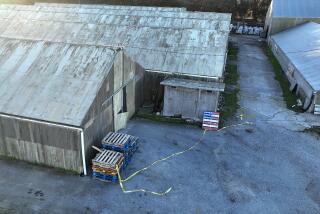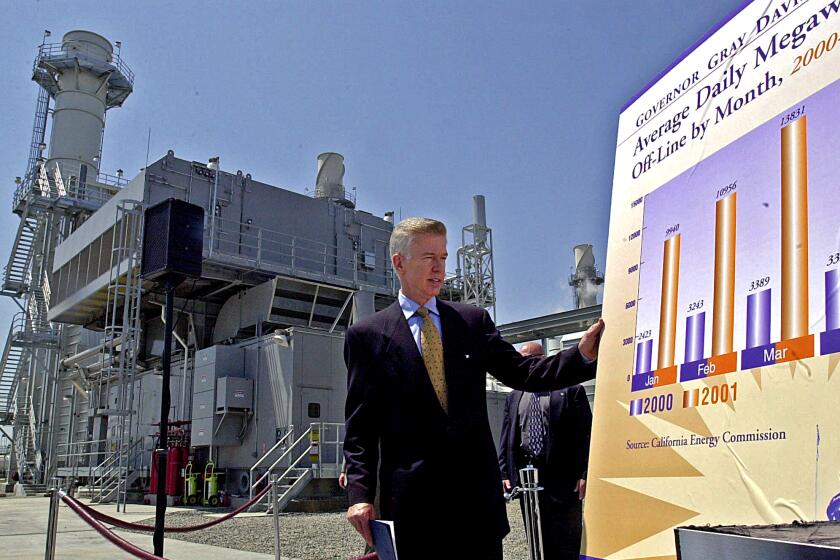Tanker Pilot Defends Action as Routine
Saying he saw no reason to question nautical charts or do his own depth readings, the pilot of the American Trader has told state lawyers that he expected no problems the day the oil tanker punctured its hull on its own anchor, spilling 394,000 gallons of crude off Huntington Beach, attorneys for the State Lands Commission said.
In a brief interview, Capt. John E. Keon declined to comment Monday on specifics of his statement to attorneys for the Lands Commission. But he bristled at suggestions by some legal and shipping experts--including lawyers who have filed spill-related lawsuits--that he should have used a skiff in front of the tanker to measure the depth before mooring.
“This was not Columbus discovering the West Indies,” said Keon, of San Jacinto. “These waters have been charted and sailed in for years. If any master has doubts about the depth, he wouldn’t proceed at all until a complete bottom scan was done.”
Keon’s account of what happened aboard the American Trader was disclosed for the first time by lawyers for the Lands Commission, which supervises leases of state property, including those of 15 offshore tanker terminals such as the one 1.3 miles off Huntington Beach.
Keon, 41, said navigation charts--the accuracy of which has been questioned by the Coast Guard--contained the best information available and that five years of experience in using the terminal told him the mooring attempt was no different from the 50 to 70 others he has completed without incident.
Keon also said he had no reports of problems at the mooring and that he did not use a fathometer to measure the depth because the device shows only what is directly under the keel.
Keon said, however, that the American Trader’s captain, A. R. (Robert) La Ware, wanted to abort the mooring attempt shortly before crewmen spotted oil leaking from the bow. Why La Ware wanted to abort the maneuver was unclear.
Rick Ludlow, a senior staff counsel for the agency, said he interviewed Keon at the commission’s Long Beach office as part of an inquiry into the Huntington Beach oil spill and the safety of the moorings under state authority.
“There was nothing in the interview to indicate that Keon did anything beyond what he was supposed to do,” Ludlow said. “This is not a conclusion, but it appears that he was using good seamanship at the time of the spill.”
Meanwhile on Monday, biologists from the state and British Petroleum continued to assess damage to the Huntington Beach Wetlands after a small amount of oil residue reached the 25-acre preserve Sunday when high tides and waves demolished a sand dike.
Louann W. Murray, a consultant with a private conservancy restoring the wetlands, said a “thin layer of sheen” ringed all seven nesting islands in the habitat, raising fears that migrating waterfowl, including two endangered bird species that breed and feed in the area, could be injured.
But Gary Gorman, executive director of the wetlands, said he does not expect any long-term impact from the oil, and state officials agreed.
Officials of British Petroleum, which owned the spilled oil, said Sunday’s tidal surge helped scrub oil-coated rocks in the jetties that separate the Talbert Channel from the Santa Ana River.
As a result, British Petroleum predicted that cleanup efforts in the channel and around the river mouth may be completed within two weeks--rather than the four to six weeks previously estimated.
Investigations of the Feb. 7 American Trader spill by the Coast Guard and a host of governmental agencies have focused on the conduct of the crew, the accuracy of navigation charts and whether large tankers should use the mooring.
Some marine experts and lawyers handling spill-related lawsuits have contended that the American Trader’s crew or the owners of the terminal should have taken depth readings around the mooring. The last time the area was surveyed was 15 years ago.
The charted depth of the Huntington Beach terminal is at least 51 feet, and the tanker approached the mooring a few hours after the lowest tide of the month. Officials say the tanker was drawing 43 feet of water when it hit its 12 1/2-foot-high, 6-foot-wide anchor as it stood upright on the bottom. Ships with drafts greater than 43 feet are not allowed to use the mooring for safety reasons.
According to commission officials, Keon believed he had 8 to 13 feet of water under his keel, an acceptable safety margin, as he prepared to coax the ship into a 700-foot-wide, U-shaped cluster of seven buoys.
During mooring operations, a ship typically cuts across the mouth of the U, laying one anchor then the other some distance away, before reversing its engines to swing the stern into the slot.
Keon, a mariner for 24 years, directed the operation under the supervision of La Ware, who is ultimately responsible for the ship.
Keon told commission attorneys he dropped the port anchor at the proper location and proceeded to the spot for the starboard anchor. After that anchor was dropped, he said, La Ware indicated that he did not like the approach and wanted to abort the mooring.
According to the commission, Keon then ordered the starboard anchor hoisted, and as the crew responded to the command they saw oil leaking from the hull. Within minutes of the discovery, an oil-containment boom was placed around the bow of the ship in an unsuccessful attempt to staunch the flow.
Lands Commission officials said 31 tankers--at least one larger than the American Trader--had used the offshore mooring without incident from November, 1988, to November, 1989.
Times staff writers Steven R. Churm and Lanie Jones contributed to this report.
More to Read
Start your day right
Sign up for Essential California for news, features and recommendations from the L.A. Times and beyond in your inbox six days a week.
You may occasionally receive promotional content from the Los Angeles Times.






